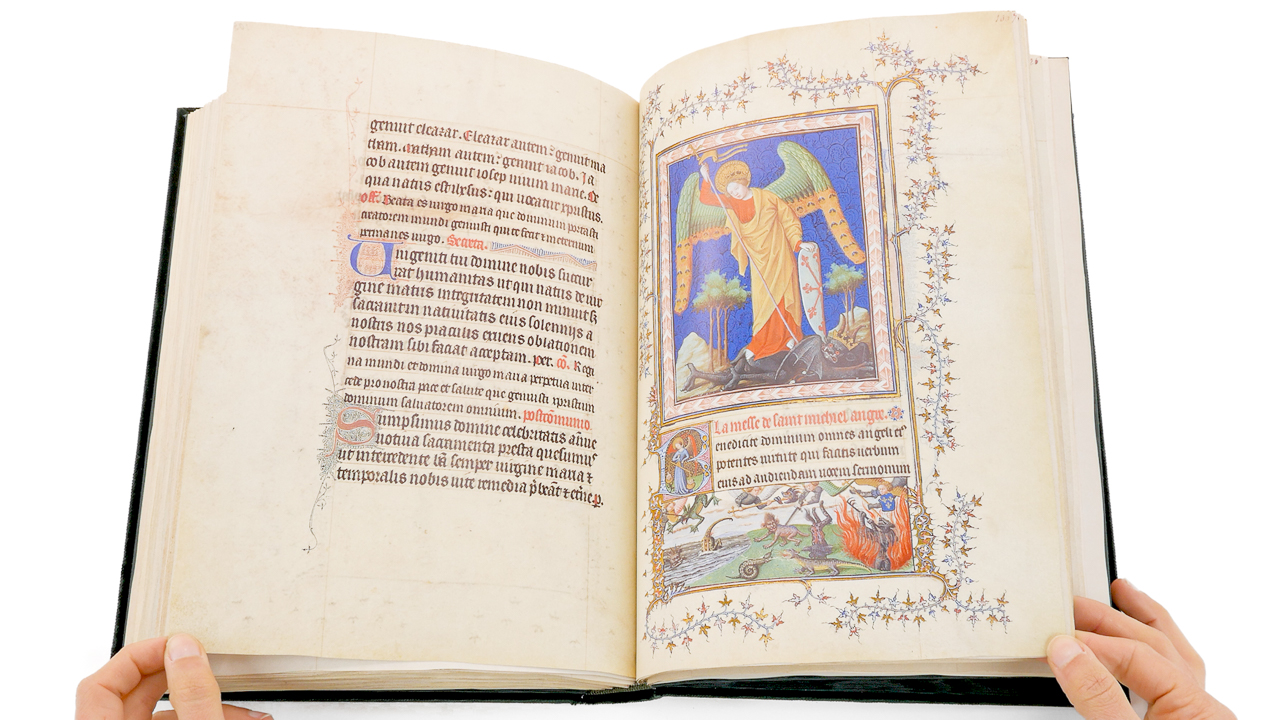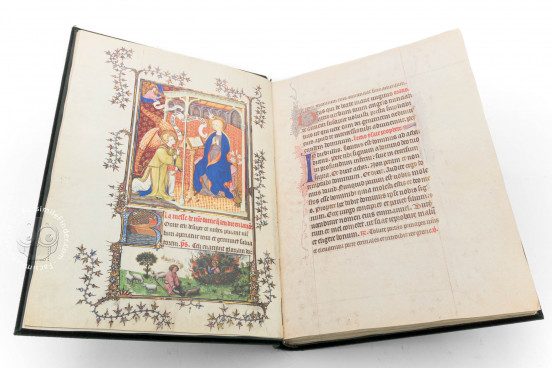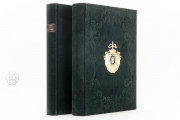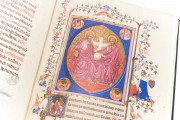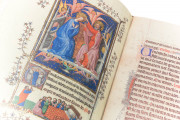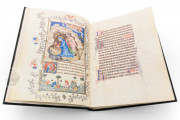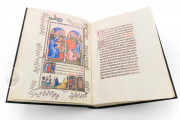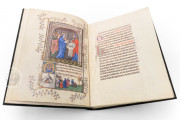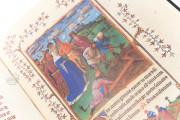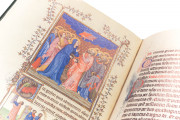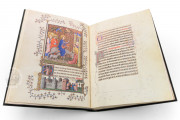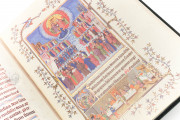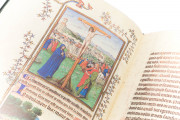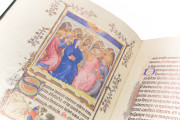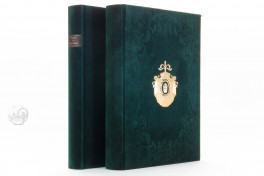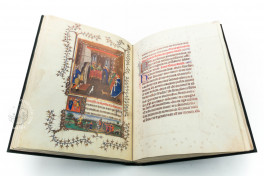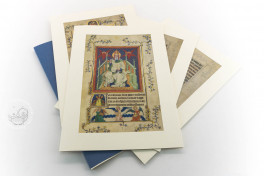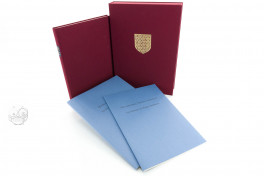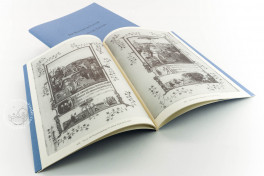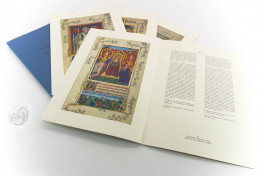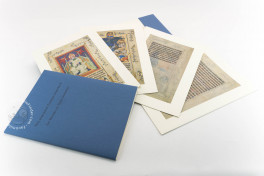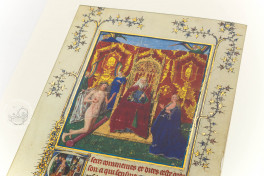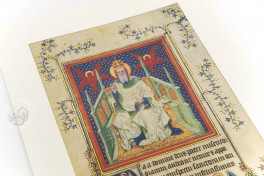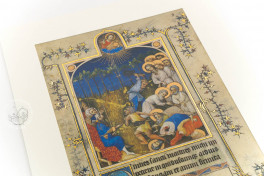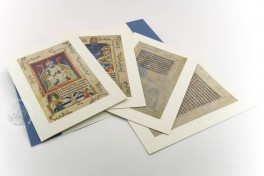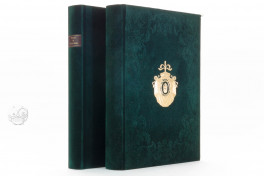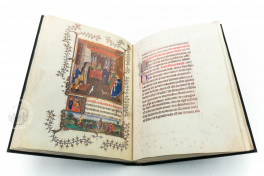The renowned Turin-Milan Hours is one of the finest and richest examples of late medieval illumination. It is a manuscript whose leaves were divided between two volumes, one of which does not survive, plus eight detached leaves, four of which are in the Louvre. Scholarly debate concerning the authorship of its twelve calendar illustrations, fifty-eight large miniatures (of which at least thirty-three survive), and more than sixty historiated initials and bas-de-page (or bottom of the page) scenes (of which at least thirty-six survive) has been intense and is ongoing.
It was decorated in Paris, Bourges, Liège, The Hague, and Bruges in a series of seven campaigns spanning sixty years, with its contents reordered and many of its miniatures retouched or repainted as it was completed. Three different patrons subsidized its creation, which began around 1390, and it features the work of several leading artistic personalities of the first half of the fifteenth century.
An Ambitious Project
Originally commissioned by the renowned bibliophile Jean of France (1340-1416), Duke of Berry, the manuscript was conceived as a massive compendium of liturgical and devotional texts comprising the contents of a missal, with prayers to be said by a lay person at Mass, and an extensive book of hours, its prayers mostly in Latin but with some in French. Among its most esoteric texts is the Office of the Lamentations of the Virgin. Together the ensemble comprised more than 400 leaves and was to feature more than 100 miniatures. The format varies a bit, but most of the illuminated pages boast a large miniature with a historiated initial, four lines of text, and bas-de-page scenes.
Nearly Sixty Years in the Making
The text of the original compendium was written by two scribes around 1390. After a burst of work on the illumination between 1390 and 1405, John of Berry traded a nearly finished portion of the manuscript to Robinet d'Estampes, his garde des joyaux (keeper of treasures). That portion is known today as the Très Belles Heures de Notre-Dame, a designation sometimes confusingly used for the larger project as originally conceived.
A New Patron
The remaining portion included many underdrawings for miniatures but was only partially painted. This is the section that scholars generally term the Turin-Milan Hours (although, confusingly, this designation is also sometimes used for the entire original). Work on this unfinished part was picked up in the 1410s and 1420s under the patronage of John, Duke of Bavaria (d. 1425), both when he was bishop-elect of Liège and after he became the Count of Holland and Hainaut in 1418. Among the artists involved at this stage were probably Jan and Hubert van Eyck and several artists working in their style.
Another New Patron
John of Bavaria was poisoned in 1425, and the final phases of painting were done for an unknown patron in the 1440s in Bruges. Among the artists employed at that time were the Master of the Philadelphia Saint Francis, the Master of Jean Chevrot, and the Master of Folpard von Amerongen (aka the Master of the Llangattock Hours). Their work, like that of the van Eyck circle before them, shows the profound influence of panel painting on Netherlandish manuscript painting of the time. By this time, the codex was regarded more as a picture gallery than a devotional book.
A Complicated History Continues
It is uncertain when the Turin-Milan Hours, itself only a portion of an originally larger project, was dispersed. The whole was in the possession of the House of Savoy, before being divided at some time before 1713. The section with the calendar and prayers passed through the hands of Vittorio Amedeo II (1666-1732), Duke of Savoy, before entering the Biblioteca Nazionale Universitaria di Torino in 1720. It was destroyed by fire in 1904, two years after reproductions of its miniatures had been published. Four leaves from this portion of the codex entered the collection of the Musée du Louvre in 1896.
After having once been in the collection of a Count of Aglié, the missal portion was purchased by Gian Giacomo Trivulzio (1774-1831) and it became a part of the Biblioteca Trivulziana in Milan. It was transferred in 1935 to the Museo Civico d'Arte Antica in Turin. Despite the location of its current repository in Turin, it is often referred to in the literature as "Milan" or "Hours of Milan." And, because of the move from Milan to Turin, this segment alone has also been called the "Turin-Milan Hours."
We have 3 facsimiles of the manuscript "Turin-Milan Hours":
- Turin-Mailänder Stundenbuch facsimile edition published by Faksimile Verlag, 1995
- Blätter im Louvre (Collection) facsimile edition published by Faksimile Verlag, 1994
- Libro d'ore di Torino-Milano facsimile edition published by De Agostini/UTET, 2005

